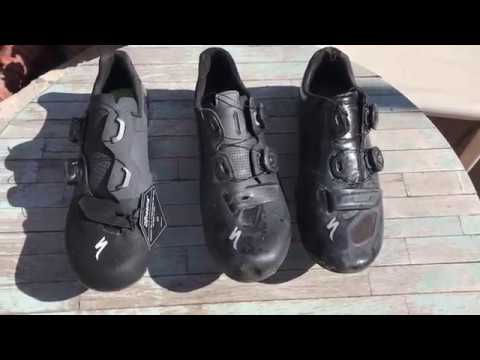How Does Climate Change Affect Sports?
Contents
How does climate change affect sports? Many factors including heat, water, and air quality can have an impact on athletes and sporting events.
Checkout this video:
The Impact of Climate Change on Sports
Climate change is a hot topic these days, and for good reason. It’s one of the most pressing issues facing our world today. The effects of climate change are far-reaching and can be seen in many different areas of our lives. One area that is often overlooked is the impact of climate change on sports.
The impact of climate change on outdoor sports
Outdoor sports are already feeling the impacts of climate change. Warmer temperatures are lengthening seasons and bringing new insect pests and diseases. There is more extreme precipitation, more frequent and intense storms, and more flooding. These changes are making it harder to maintain playing fields and equipment, and forcing some athletes to train in less-than-ideal conditions.
In the United States, for example, climate change is projected to increase the number of days with temperatures above 90°F (32°C) by 2050. This will put a strain on athletes, particularly those who are not accustomed to heat or who have medical conditions that make them vulnerable to heat-related illnesses. It will also reduce the amount of time available for outdoor sports and lead to more cancellations and postponements.
climate change is expected to cause droughts in some areas and flooding in others. This will make it difficult to maintain playing fields and could lead to water shortages at sporting events. In addition, warmer temperatures will increase evaporation rates, making it harder to keep athletes hydrated.
Certain types of outdoor sports are particularly vulnerable to climate change. For example, skiing is reliant on cold temperatures and snowfall, both of which are expected to decline in many parts of the world as the planet warms. Similarly, ice hockey is dependent on frozen lakes and rivers, which are melting earlier in the spring due to rising temperatures. Fishing, meanwhile, is being affected by changes in water temperature and quality, as well as the migration of fish species to cooler waters.
The impact of climate change on indoor sports
Indoor sports, such as basketball, volleyball, and gymnastics, are played in climate-controlled environments. However, the impact of climate change on indoor sports is still a concern. Rising temperatures can make it difficult for athletes to train and compete in comfortable conditions. In addition, extreme weather events, such as heat waves and hurricanes, can disrupt training schedules and cause damage to facilities.
The Effects of Climate Change on Athletes
Climate change is having a real and tangible affect on athletes and sports as a whole. As the Earth’s climate continues to warm, sea levels are rising and weather patterns are becoming more extreme. These changes are already having an impact on athletes, who are having to deal with increased heat, humidity, and air pollution, as well as more extreme weather conditions.
The effects of climate change on amateur athletes
There is a lot of evidence to support the idea that climate change is affecting our planet in a number of ways, and one of the areas where this is most apparent is in the world of sports. As temperatures around the world continue to rise, athletes are finding it harder to compete in conditions that are outside of their comfort levels.
There have been a number of high-profile examples in recent years of athletes struggling with heat during competitions. In 2018, several runners collapsed during the New York City Marathon due to heat and humidity. In 2019, several professional golfers withdrew from the British Open due to heat exhaustion. And in 2020, the Tokyo Olympics were postponed due to concerns about the potential impact of extreme heat on athletes.
While it is impossible to say for certain how climate change will continue to affect sports in the future, it seems likely that we will see more instances of extreme weather impacting both professional and amateur athletes alike. As temperatures continue to rise, it will become increasingly important for athletes to train in conditions that simulate those they will face on race day.
The effects of climate change on professional athletes
While the effects of climate change are often discussed in terms of its impact on the environment, there is another group that is affected by climate change: professional athletes.
Athletes compete in a variety of sports, including football, basketball, hockey, and baseball, among others. In many cases, these athletes are required to travel to different parts of the country or even the world in order to compete. As a result, they are exposed to a variety of different climates.
Climate change can have a number of impacts on professional athletes, both in terms of their health and their performance. For example, warmer temperatures can lead to dehydration and heat exhaustion, while extreme weather conditions can impact an athlete’s ability to train properly. In some cases, climate change can even force the cancellation or postponement of events.
While the effects of climate change on professional athletes may not be as widely discussed as its other impacts, it is nonetheless an important issue that merits attention. As climate change continues to occur, it is likely that its effects on professional athletes will become more pronounced. As a result, it is important to keep abreast of this issue in order to ensure that athletes are able to compete in a safe and fair environment.
How Can We Combat Climate Change in Sports?
It’s no secret that climate change is real, and it’s happening right now. We can see the effects of climate change all around us, and one of the places it’s having an impact is in the world of sports. From increased heat and humidity at sporting events to changes in the timing of seasons, climate change is affecting sports in a big way. But what can we do about it?
What can be done to reduce the impact of climate change on sports?
There are a number of ways in which the impact of climate change on sports can be reduced. For example, facilities can be designed to reduce energy consumption, and athletes can be encouraged to offset their carbon footprints.
In terms of design, energy-efficient solar panels can be installed on sports facilities to generate power. Alternatively, passive heating and cooling systems can be used to regulate temperature, and rainwater can be harvested to reduce the need for irrigation.
As for athletes, they can be made aware of the issues surrounding climate change and encouraged to take action both in their personal lives and as part of their professional careers. For instance, they could advocate for more sustainable practices within the sporting industry, or use their platform to encourage others to adopt green lifestyle choices.
What can be done to mitigate the effects of climate change on athletes?
Despite the increase in awareness of climate change and its effects, very little has been done to mitigate the effects of climate change on athletes.
Athletes are especially vulnerable to the effects of climate change due to their heavy reliance on the outdoors for training and competition. Higher temperatures and increased precipitation can lead to dehydration, heat stroke, and other health problems. In some cases, extreme weather events can force the cancellation or postponement of events.
There are a few things that can be done to help combat the effects of climate change on athletes. One is to ensure that athletes have access to safe, clean water during competition and training. Another is to provide adequate shade and cooling areas for athletes during hot weather conditions. Finally, it is important to educate athletes on the importance of staying hydrated and taking breaks in order to avoid heat-related illnesses.
While there is no silver bullet for mitigating the effects of climate change on athletes, these measures can help reduce the risk of health problems and ensure that athletes are able to train and compete in safe conditions.






